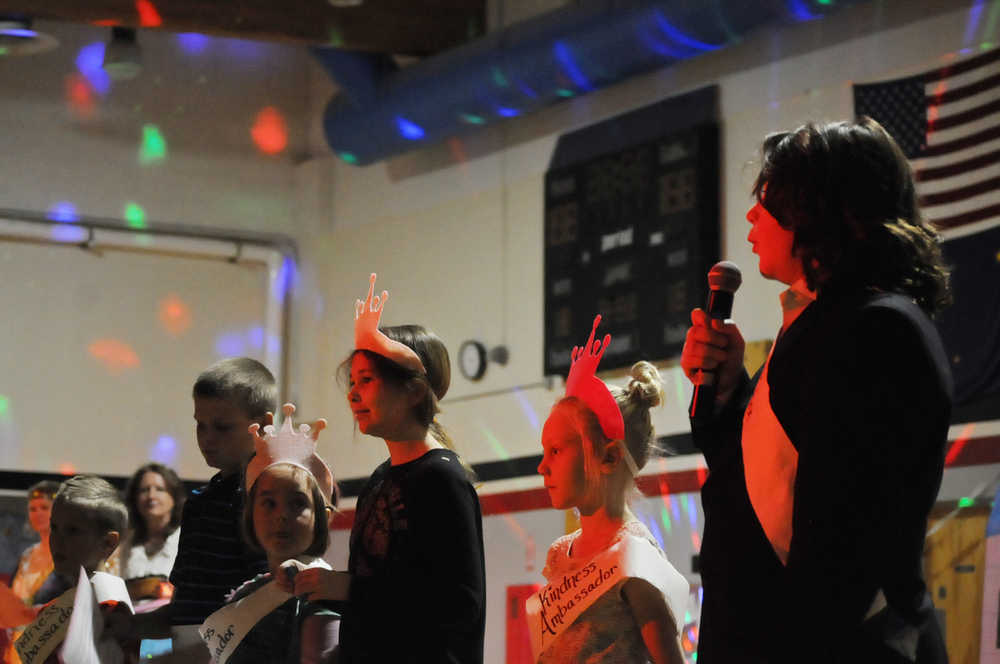Beyond just gifts, hugs and kind words, the teachers and staff at Sterling Elementary School are hoping students will find many ways to be kind this November.
The school kicked off its 21-Day Kindness Challenge on Monday with a school-wide assembly headed up by the “Kindness Ambassadors,” students involved with organizing the event who explained how it would work.
Boiled down, it’s simple: Be kind. Often.
Students are challenged this month to perform five acts of kindness every day and write them down on slips of paper in their classrooms or the school office. Pretty much any selfless act can qualify, from handing a friend a pencil in class to sharing lunch with someone who doesn’t have one. At the end of the month, teachers and staff will chain together all the strips and hang them around the school, celebrating the students’ accomplishments with another assembly on Dec. 1.
The practicality is very real — the program was designed as a positive reinforcement effort to prevent bullying, reinforcing positive interactions, according to the program’s website. Designed by a California mother for her children’s school, about 27 schools nationwide have used it. It is similar to other kindness programs like the Great Kindness Challenge, Think Kindness or Random Acts of Kindness, but this is the first time this particular program has been used in Alaska, said Denise Kelly, Sterling Elementary School principal.
“We believe this is the first time this particular program has been used in Alaska,” she said.
The title is based on the old idea that it takes 21 days to form a new habit. It fits in with the school’s Positive Behavioral Interventions and Supports program, an in-school program designed to help intervene with students at risk of behavior problems. The program has three tiers, the first of which is broad and is administered to the entire student population.
One current trend in PBIS is to use positive support on a schoolwide basis for cognitive goals — like kindness. Students in schools with schoolwide positive behavioral support systems had fewer school suspensions than those without, and perceptions of safety improved in those schools, according to a 2015 post from the National Institute of Justice’s Office of Justice Programs.
The discussions for the event started between four sixth-grade students and two teachers, evolving from there to include two students from each class as kindness ambassadors. Teachers were asked to pick two students they thought were the kindest to be the ambassadors.
The challenge provides the older kids with a chance to be role models for the younger ones, Kelly said.
“We’ve really been pushing for the sixth graders and the kindergarteners to interact more,” she said.
The program builds on one that Sterling Elementary School put in place in 2009 in which teachers awarded students colored pom-poms as tokens of good behavior. The balls were collected into communal jars in each classroom, and when the jars were filled, the classrooms would have celebrations. When the school’s communal jar was filled, the whole school would have a party. Sterling Elementary School was the first in the district to pick up the PBIS program, according to previous Clarion reporting.
At the kick-off assembly Oct. 31 — where princesses and pirates were intermixed with students in ordinary dress — the Kindness Ambassadors demonstrated simple acts other students could do. They presented flowers and offered kind words and hugs to those in attendance. Before leaving the assembly, Kelly sprinkled all the students with “kindness” confetti.
“I’ve got kindness in my hair,” one student said, shuffling his hands through his hair, as he walked back out into the hallway.
Reach Elizabeth Earl at elizabeth.earl@peninsulaclarion.com.

